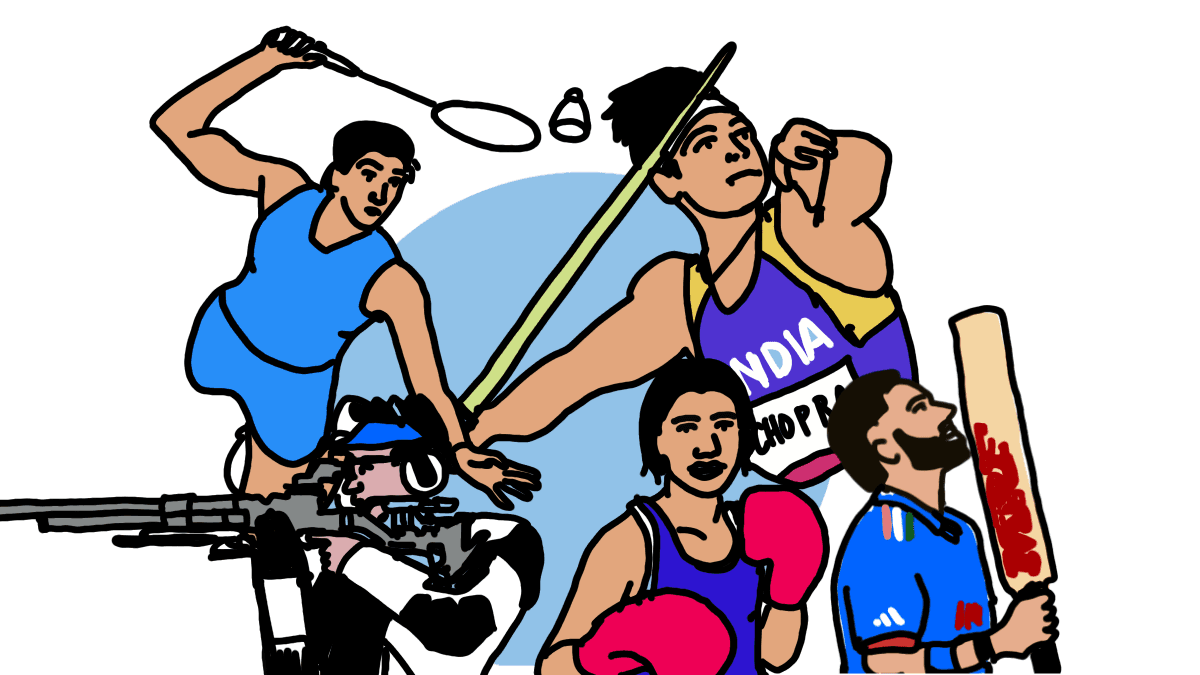
Oct 29, 2023
Is a 50-Year Sports Revolution Brewing in India?
Brand
IPO
Bootstrapped
B2C
B2B
Sports
Last fortnight, India began a clean sweep while hosting the 2023 Cricket World Cup, hot on the heels of a record-breaking Asian Games performance
English Opening
In the 1700s, the simple yet engaging games of Kho-Kho, Kabaddi, and Gilli-Danda were local favourites.
These games were more than just pastimes. They were life lessons in strategy, teamwork, and resilience, played without fancy gear or structured rules.
By the 1800s came the British
The British brought with them colonialism. But they also brought hierarchy via sports, reflected in the introduction of Cricket, Football, and Tennis.
Cricket wasn't just a game. It was a theatre of societal status where your social rank could score you a place in the team, sometimes more than your ability with the bat. The cricket clubs became arenas of power play, where the elite showcased their status as much as their sports skills.
Football, too, rolled into the Indian sports scene with a classist spin. The Durand Cup of 1888 and the establishment of the Calcutta Football Club in 1872 were landmark events, albeit mirroring the existing social hierarchies by initially barring non-European members.
Then there was tennis, served into the Indian milieu, finding favour among high society.
The British not only brought new games but also introduced clubs and gymkhanas, albeit with exclusivity. These institutions, despite their highbrow air, played a pivotal role in structuring sports, organising tournaments, and laying a foundation for a systematic sporting infrastructure.
Parallel to these new sports entrants, India sprinted onto the global sports stage with its Olympic debut in 1900. Norman Pritchard's dual silver wins weren't just medals.
They were the first sparks igniting India's international sports ambitions.
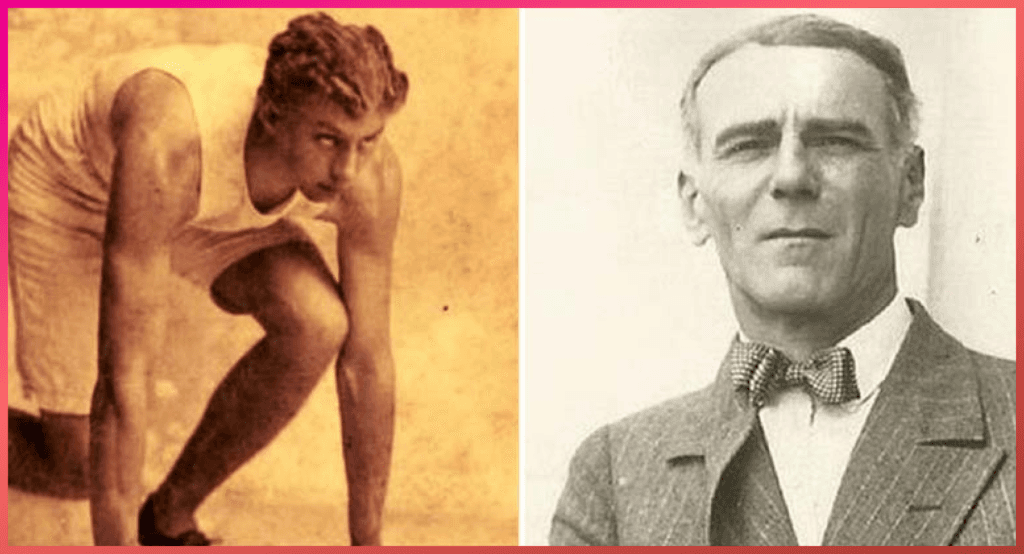
In the early 1900s, the traditional Kabaddi and Kho-Kho raced from local grounds to international arenas, getting formalisation at Pune’s Deccan Gymkhana club.
These sports weren't content with domestic applause. They leapt onto the global stage during the 1936 Berlin Olympics, flaunting India’s indigenous sports flair.
Around the same time, Indian field hockey surged from modest roots to international acclaim.
Initiated into the sport by British regiments and formalised with the Indian Hockey Federation's inception in 1925, India's journey took a historic leap in the 1928 Amsterdam Olympics.
The national team, graced by legends like Dhyan Chand, showcased unprecedented skill and teamwork, bagging the gold without letting in a single goal. This feat kickstarted an era of dominance with successive victories in the 1932 and 1936 Olympics. The era before 1947 wasn't just a historical period.
it was the sporting prelude that set the stage for a post-independence India.
Independence Innings
Indian sport broke free from colonial chains in 1947.
It was to be a ride of victories, tests, and pivotal twists, reshaping Indian sports forever.
The tale kicked off with Indian hockey's golden days. A sport that saw India bagging Olympic golds from 1948 to 1956 was more than just wins. It was India flexing its newfound freedom on the global stage.
Legends like Dhyan Chand and Balbir Singh Sr. danced on the field, their stick work captivating the world.
Their gameplay was a spicy mix of raw talent, seamless teamwork, and a relentless spirit. It was a mirroring a nation carving its own fate.

Seeing the oneness, India began to recognise sports as a tool for nation-building. The next 30 years would be the zero to one for many Indian sports.
A big stride was the founding of the National Institute of Sports in Patiala in 1961, aimed at nurturing athletic sparks. Around this this period the All India Chess Federation (AICF) was established, marking a pivotal moment in structuring the chess framework in India.
Indian hockey continued to dominate globally, including a gold medal in the 1964 Tokyo Olympics. In boxing, Padam Bahadur Mall emerged as the first Indian boxer to clinch a gold medal at the Asian Games held in Jakarta, paving the way for other prominent winners like Hawa Singh in 1966 and 1970.
Billiards, too, saw a significant milestone in 1978 when Michael Ferreira surpassed the 1000-point barrier in the National Billiards Championships, setting a new benchmark in the sport.
In badminton, 1980 became a hallmark year with Prakash Padukone's triumph at the All England Open Badminton Championships, showcasing India's budding prowess in the sport on a global stage. The same year, India won the last Olympic Gold in field hockey.
The golf course witnessed a moment of glory in 1982 as India secured a gold medal at the Asian Games, marking a significant achievement in the sport.
Then, it was time for the game of all games - cricket
The 1983 Cricket World Cup win was more than just a trophy. It was a cricket crescendo with Kapil Dev leading the orchestra. This win didn't just make headlines; it turned cricket from a colonial hangover to a national brew.
This win sparked a multi-decade revolution that would change Indian sport.
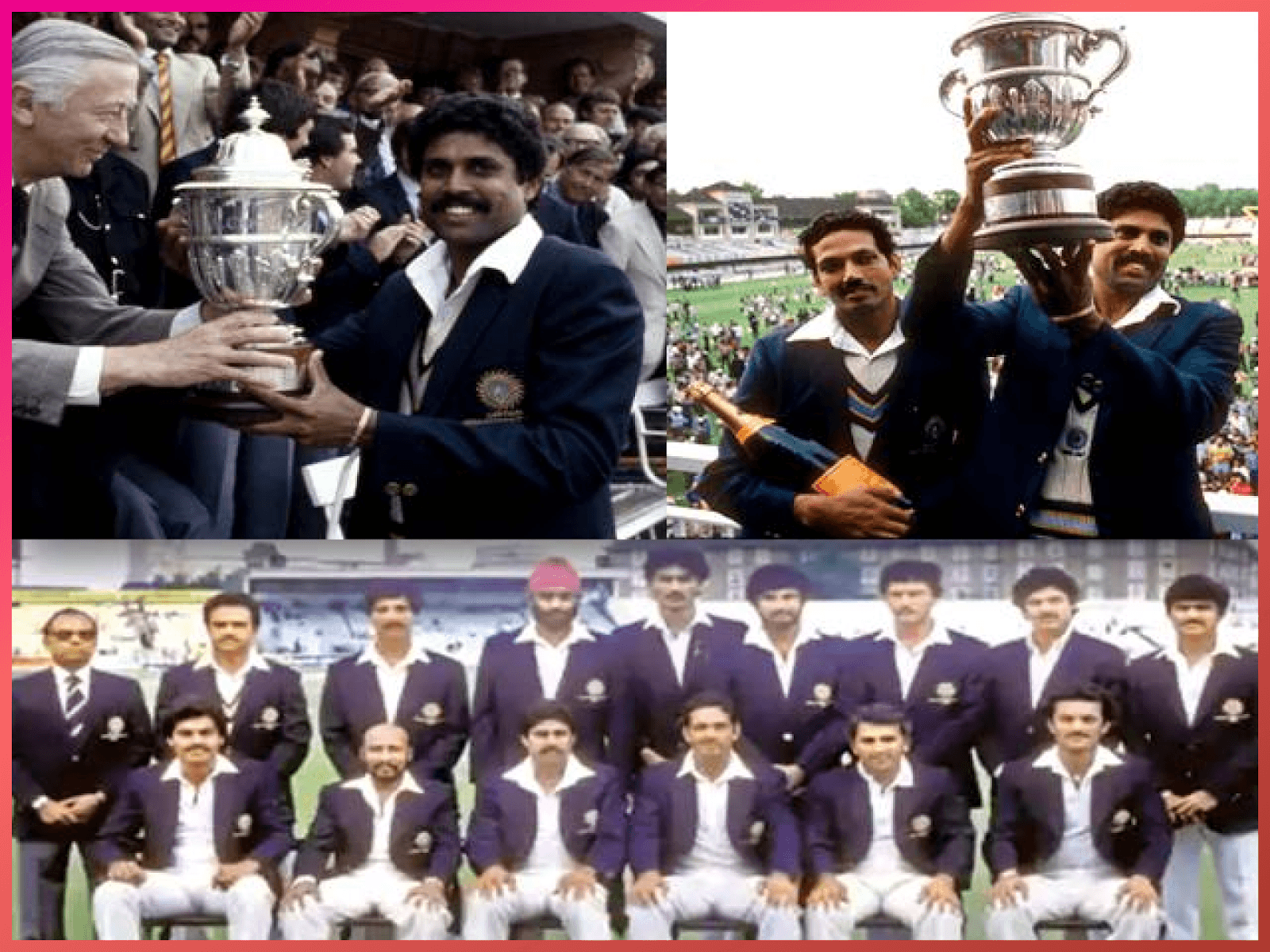
This cricket craze baited investments and eyes towards sports infrastructure. A giant leap was the birth of the Ministry of Youth Affairs & Sports (MYAS), tasked with building sports infrastructures and fostering athletic talents.
It was with good reason that Ashis Nandy would quip “"Cricket is an Indian game, accidentally discovered by the English"
India continued to find its feet, with new heros in new sports
1984 spotlighted India's athletic potential when PT Usha narrowly missed out on an Olympic bronze by 0.01 seconds. Vishy Anand became the first Grandmaster from India in 1988, brought a sea of change in the perception and popularity of chess in India.
These achievements, spread across different sports, indicated a slowly diversifying sports culture in India, laying a modest foundation for the multi-sport nation India was to evolve into in the subsequent decades.
Indian were beginning to win games, but the road to robust sports infrastructure was more a crawl than a sprint.
Early on, India's gaze was fixed on critical areas like health, education, and industrialisation, nudging sports to the backseat. Sports was a government show, with private sectors barely pitching in.
Resource allocation was a tough nut to crack, with most being funnelled to pressing needs amidst a booming populace. Cricket hogged the limelight, casting shadows on other sports, and stifling a diverse sports culture.
Technological leaps, essential for modern sports infra, were scarce then. This tech drought reflected in India’s modest show on global sports stages, barring cricket. Despite our size, we struggled at the Olympics and Asian Games.
1999 came badly, with India crashing out in the Super Six of the World Cup. But as sporting performances seemed to be at a low, a new transformation was beginning.
Commercial Hit
Money started flowing into sports and greed first followed.
In 2000, Indian cricket team captain Azharuddin, Ajay Jadeja and Manoj Prabhakar were convicted of match-fixing and received a life ban from the Board of Control for Cricket in India (BCCI).
The dark cloud of match-fixing loomed over Indian cricket during that period, raising questions about the integrity of the sport and the players involved.
Hockey was not spared either.
Shortly before the Hockey World Cup in the early 2000s, Indian hockey players revolted against their federation due to non-payment of dues and demands for salary hikes, highlighting the administrative and financial issues plaguing the sports sector.
Despite these hurdles, bigger things were about to happen.
The 2003 Cricket World Cup was a real spectacle, glueing eyes to screens. Although India stumbled at the last hurdle, the event marked the onset of a commercial bonanza in cricket.
Stars like Sachin Tendulkar and Rahul Dravid became ad poster boys, making every boundary hit and wicket a magnet for advertisers.
India had begun to flex its muscles with something new. Bringing the flavour of EPL, BCCI conceptualized an entirely new cricket league.
The league would be called the Indian Premier League, or IPL. Another ICL league would start but flame out as the IPL consumed all the oxygen.
In 2008, the Indian Premier League transformed cricket into a commercial carnival.
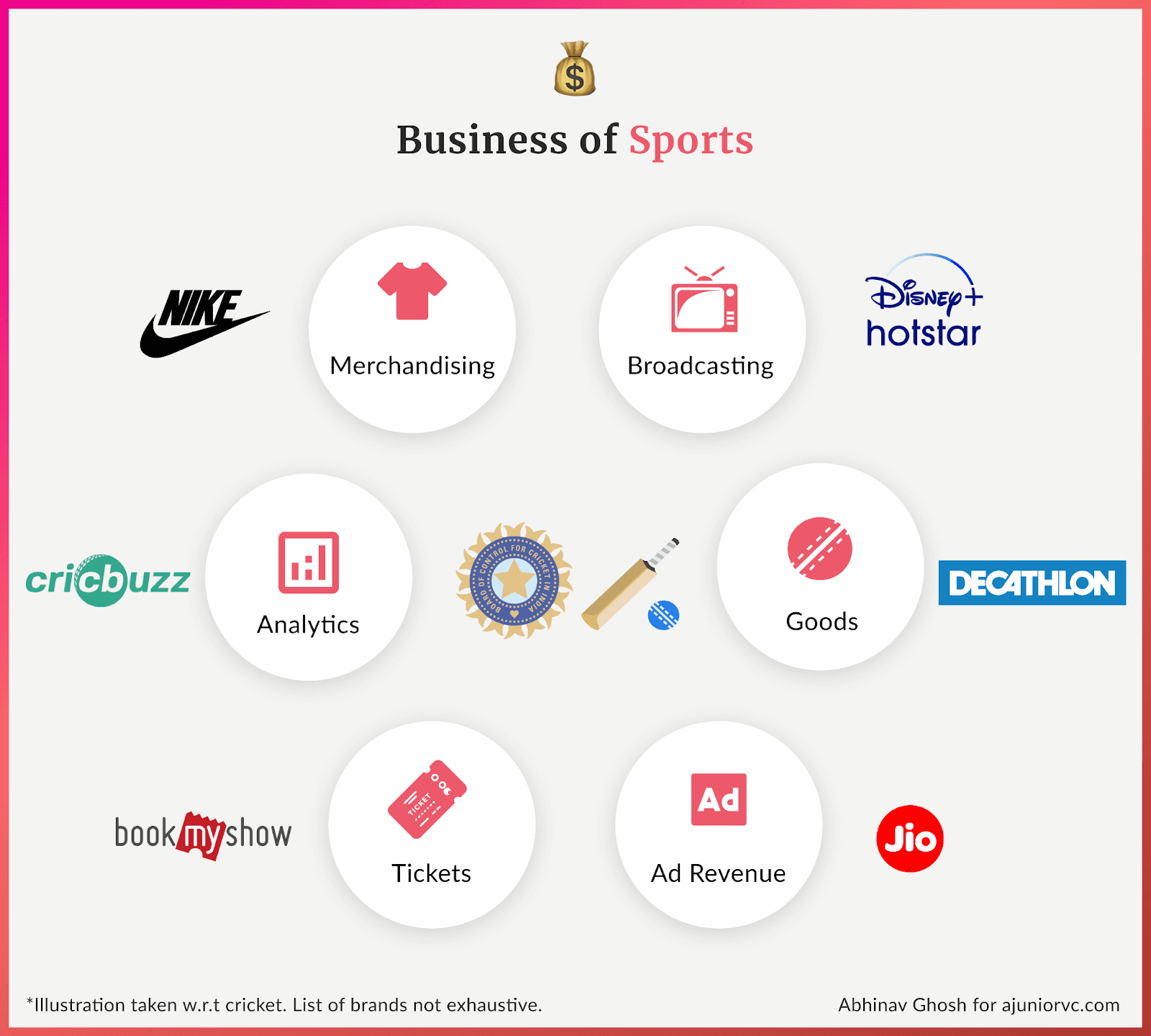
With its city-based franchise model and player auctions, cricket morphed from a game into a thrilling business venture. Initially, teams were snagged for a few hundred crores, like Rajasthan Royals at Rs. 273 crore.
Advertising was the cherry on this lucrative cake. Each IPL match came with 2,300 seconds of ad spots, raking in a fortune for broadcasters season after season.
As cricket commercialized spectacularly, performances in other sports improved.
This period saw Viswanathan Anand clinching the World Chess Championship title in 2007, a monumental feat that resonated with the ambitions of countless Indian chess aspirants.
The country began to witness a wave of young and talented chess prodigies making their mark in international chess. Figures like Harika Dronavalli, Pentala Harikrishna, and Koneru Humpy became synonymous with Indian chess's rising prowess.
The 2008 Beijing Olympics saw Abhinav Bindra bagging gold, drawing a fresh global spotlight on Indian sports. This glory rippled across other sports too. Badminton, tennis, and boxing started enjoying a slice of the sponsorship pie, with stars like Saina Nehwal, Leander Paes, and Mary Kom inspiring a new athlete brigade.
The establishment of the Pullela Gopichand Badminton Academy was a leap towards nurturing badminton talents, although the sport’s cost was a hefty serve to handle for many.
Boxing punched above its weight too. Thanks to earlier groundwork by the Sports Authority of India, Vijender Singh’s bronze in the 2008 Olympics marked a knockout moment for Indian boxing.
However, cricket’s vertical commercial ascent came with a price.
Tennis, on the other hand, faced a sponsorship squeeze post-2008, as the IPL’s dazzle diverted funds.
A sport India prided itself in, hockey faced a significant setback in 2008 when the national team failed to qualify for the Olympics for the first time since 1928.
The failure was a mirror to the administrative issues, political tangles, and infrastructural inadequacies that plagued not just hockey but many other sports. Money was needed.
The superstar called cricket was cutting oxygen to the other erstwhile stars. But what had become amply clear was sports had become economic engines.
A new stage for India’s ascent was set.
Playbook for New Sports Raiders
IPL sowed the seeds of a long-standing marriage between sports and entertainment in India.
IPL became a second home for India’s entertainment and business elite. Bollywood personalities and business tycoons invested heavily in franchises.
But beyond entertainment, the IPL would also prove to be a money-making machine for all involved. Sony and World Sport Group spent a whopping $1B for the broadcasting rights in a ten-year contract, signalling their strong belief in the sport and format for years to come.
DLF shelled out $50M for the title sponsorship, while Hero Honda Motors paid $23M, and PepsiCo India paid $13M for the co-sponsorship and beverage partnership, respectively.
IPL would also open newer creative avenues for sponsorship, as Kingfisher bid $27M to become the official umpire partner. This would see their brand on all the umpire uniforms and the TV screens for the third umpire decisions.
From 2009 to 2012, the IPL’s viewership soared from 100M to 160M, a testament to the growing interest in the sport and the glamour that accompanied it.
By 2010, Sony would be charging Rs 4.5L for a 10 second ad-spot, a 200% increase from 2 years ago. Their advertising revenue grew from Rs 450 Cr to Rs 700 Cr in the same year.
This growing popularity was also reflected in the sponsorship revenues of the teams, who reported their revenue double Y-o-Y.
2011 saw Hero Honda sign a Rs 75Cr deal with the Mumbai Indians, and Aircel sign the most expensive deal yet with the Chennai Super Kings at Rs 85Cr.
While the IPL was bringing the country together with its promise of sports and entertainment packaged into one, another mammoth event was on the horizon.
The first half of 2011 would see India host 13 other nations for the ICC Cricket World Cup.
28 years after the last major win, a team of would-be legends and young IPL talent led by MS Dhoni would lift the cherished trophy in front of a packed Wankhede Stadium in Mumbai.
Indian cricket’s success, coupled with the rise of the IPL, would provide the playbook for other fledgling sports.
Badminton would be the first with the inception of the Indian Badminton League (IBL) in 2013.
The promotional advertisement featured Saina Nehwal, dressed up in cricket pads, walking to the court, asking the audience if the image was enough to think about badminton.
Indian badminton players broke barriers, entering the top twenty across categories. Star Sports, the master enabler of almost every sport in India, broadcasted IBL live.
The IBL internationalized the sport. Through its prize fund of One Million Dollars, youngsters were suddenly earning lakhs of rupees. Badminton was closely following in cricket’s footsteps to become another sporting industry.
India’s national sport wasn’t to be left far behind.
The Hockey India League, in 2013, would sign a two-year title sponsorship deal with Hero Motocorp, a long-time backer of the sport, to bring Hockey back to its old glory.
Star Sports, to create a multi-sport culture in India and inspired by the increasing popularity of international football in India, aimed to revive hockey’s appeal in the country.
It set aside a budget of Rs 100Cr for the production and marketing of the Hockey India League, an amount that far exceeded anything ever seen by the sport.
The vision entailed an EPL-like experience for the sport, starting with the pre-show, the analysis, the stats and the match itself. IMG, the production company responsible for the EPL, was brought in to handle the production.
While the IBL attracted ~20MM viewers for the 18-day tournament, the HIL attracted double that at just over 41MM viewers. The two together accounted for only a third of the IPL’s viewership at 190MM.
It was a clear indication of the direction the sports were heading in.
Smashing into Big Fields
As badminton and hockey began to gain popularity, another sport rose from the shadows.
An increasingly affluent middle class, combined with the regular broadcasting of football leagues from England, Spain and Italy, led India’s administrators to believe the door was finally opening.
Former Indian Captain Sourav Ganguly said that in a cricketing nation of 1.25B people, he saw football as the next biggest sport. This motivated him, as he invested in his hometown Kolkata club for the newly formed Indian Super League in 2014.
He would not be the only one, as `Little Master` Sachin Tendulkar would invest in the Kerala Blasters team.
The potential of the Indian Super League would culminate in it being a joint venture between Reliance Industries Ltd and IMG, a global sports, fashion and media business.
It saw some of the biggest, but ageing, names from Europe, such as David James, Robert Pires, Alessandro del Piero, Freddie Ljungberg, Nicolas Anelka, and David Trezeguet.
As with the IPL, ISL started with a glorious opening ceremony at the Salt Lake Stadium, selling 70,000 tickets for the same.
It featured Atletico Kolkata, owned by Sourav Ganguly and partly by Spain’s Atletico Madrid, against the Kerala Blasters, owned by Sachin Tendulkar.
A cricketing start for the new football league

Ironically, the final game of the season was also between the same two teams, as Atletico edged Kerala Blasters to take the championship with a late win. The final recorded a viewership of 57M, around 1/3rd the viewership of the IPL final in the same year.
More surprising, though, was that of the 429M viewers throughout the season, women and children accounted for 57%, a growing testament to the diverse fan base the sport was forming.
2014 also saw the unexpected rise of Kabaddi from a rural sport to a televised sensation with the birth of the Pro Kabaddi League.
The league consisted of 8 teams and a total of 56 matches in the league format, followed by the semis and final, mimicking IPL’s format.
Just like it did with badminton and hockey, and IPL before them, Star Sports played a key role in the Pro Kabaddi League’s popularity.
Similar to the strategy it employed with Hockey, Star Sports employed IMG and Prometheus to build the best production for the ancient sport. It also set up a dedicated budget for social media marketing.
While the rural population flocked towards the sport, Star had its work cut out getting the urban viewers to show interest.
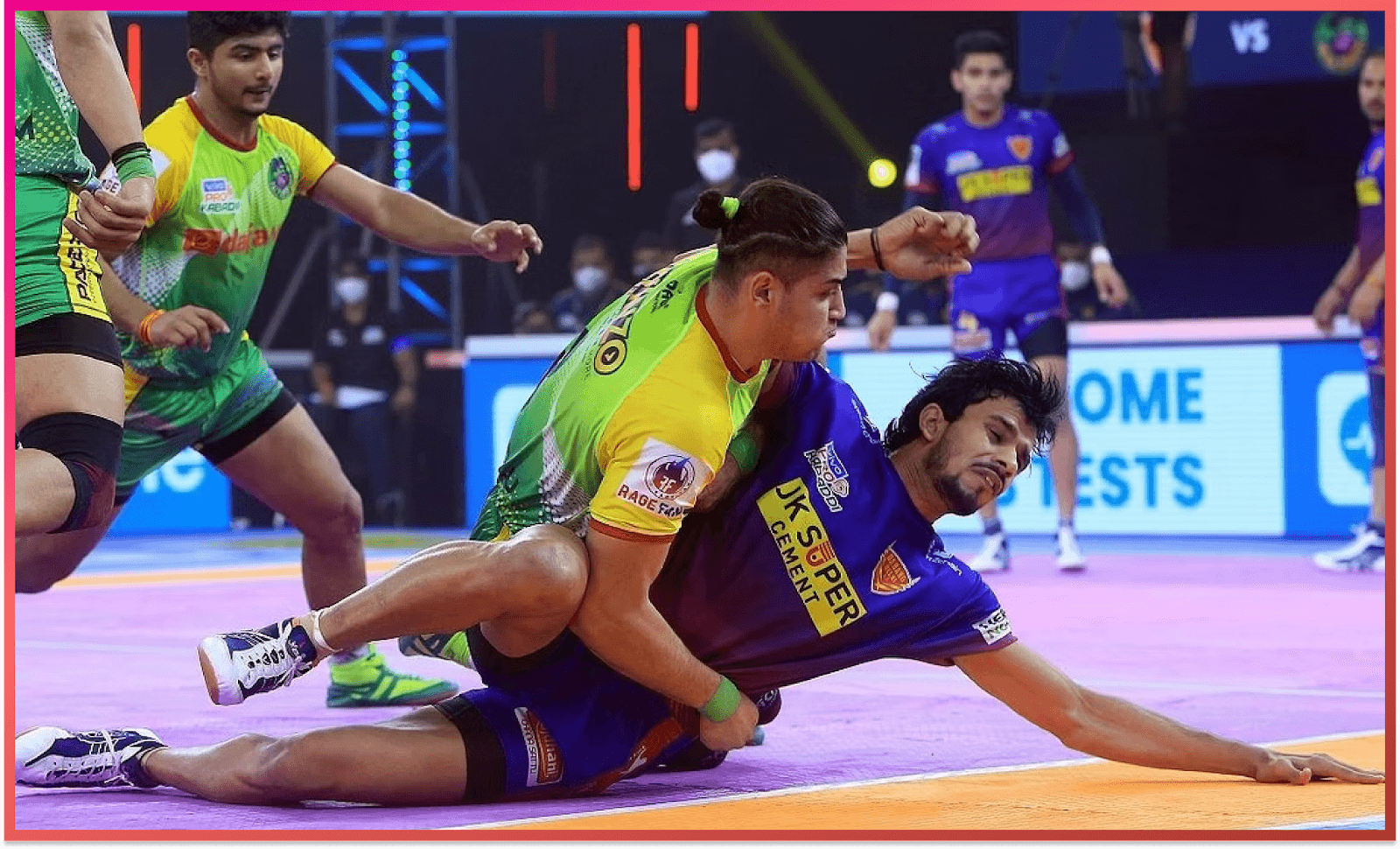
It began on-ground promotions, obstacle courses at popular shopping venues and multiplexes, aiming to test people’s strength, speed and agility, all qualities that make a good Kabaddi player.
The Star Sports Pro Kabaddi League in 2014, in its first season, was watched by an incredible 435 million viewers, second only to the Indian Premier League’s 552 million.
The final between the Jaipur Pink Panthers and U-Mumba attracted 86.4 million viewers, which was approximately one out of every four viewers in India.
The event also gained 2.3 billion-plus impressions on social media, with the PKL’s Twitter witnessing more than 25,000 tweets coming daily for the knockouts.
By 2015, IPL’s flywheel had given birth to badminton, kabaddi, hockey and football. A new disruption was about to create an entirely different sport.
Noobs to Digital Pros
In 2016, Ajey Nagar, a young 17-year-old in Faridabad, made a bold decision that would alter the course of his life.
Dropping out of school, he would focus on his Youtube channel. Having started his channel by posting short clips of the cult classic Counter-Strike. His content quickly grew traction as he started live-streaming his games, attracting a dedicated base of 150,000 subscribers.
Little did Ajey know that his channel, ‘CarryisLive’, was destined to become one of India’s biggest gaming channels. Ajey was to ride the wave propelling the gaming subculture.
Helping this subculture was the perfect storm. Exploding internet penetration rates, the proliferation of smartphones - complemented by a large, young population ready for sustained dopamine spikes.
Jio’s launch would propel this into an entirely new orbit.
As huge swathes of the population experimented with their first smartphone, puzzle and arcade games like Candy Crush and Subway Surfers acted as the perfect hook. By 2016, casual gamers, or those spending less than 30 minutes, numbered 12 crore in India.
Despite the large base, monetisation was tricky. The average Indian casual gamer was used budget phones priced below INR 20,000 and unwilling to spend money for buying gaming subscriptions or in-app purchases.
Consequently, monetisation models in India were limited mostly to advertisement-based revenues.
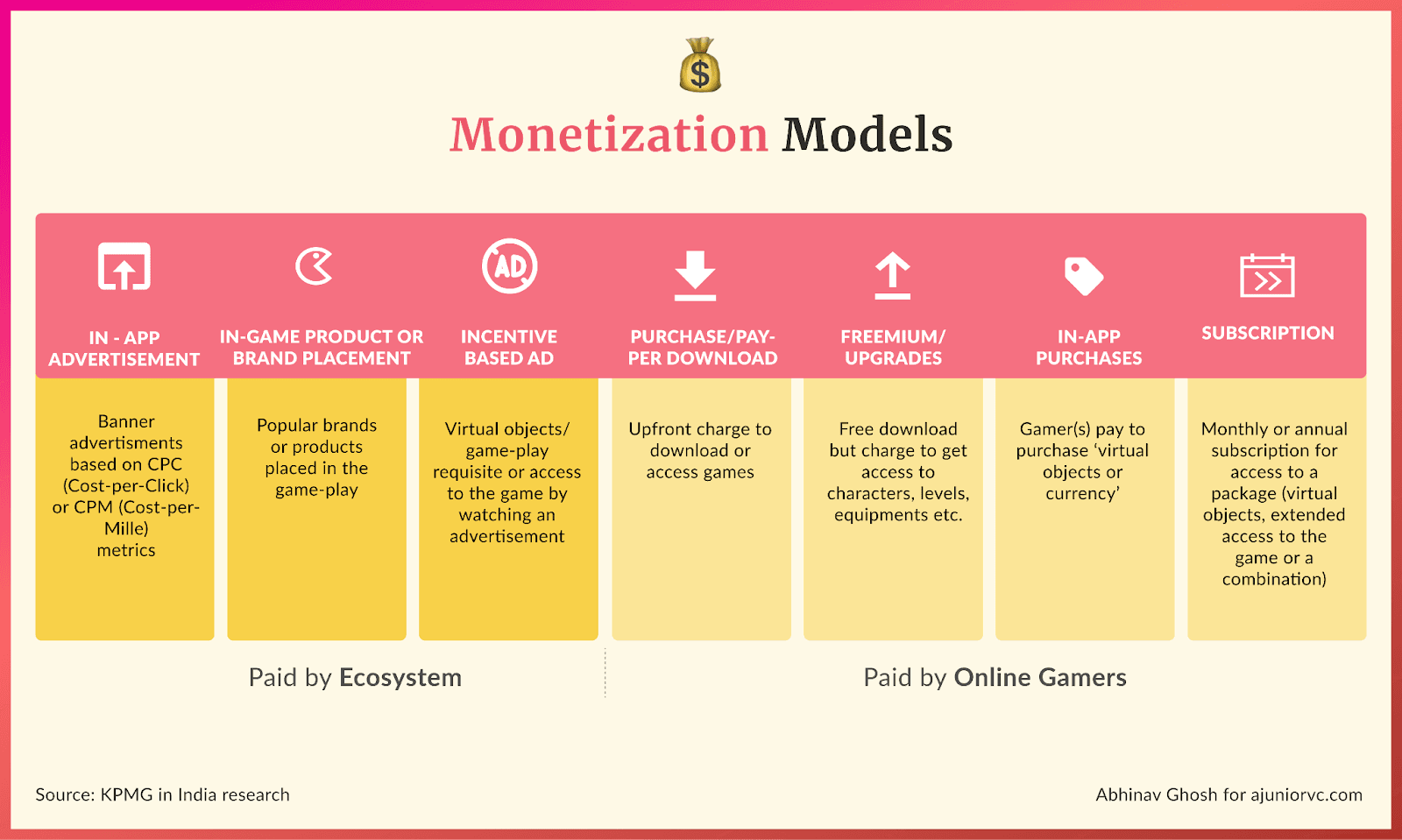
This yielded a market size pegged at INR ~2,000 crore, indicating a small ARPU of ~INR 160 per annum. Strategy-based Freemium games like Clash of Clans, enjoying high user retention and engagement metrics, dominated the revenue scoreboard.
Casual gaming was expected to grow at a CAGR of ~28 percent to reach a size of INR 8,300 crore by 2021. Market forces responded, with Indian game developers rising from 5 in the early 2000s to 250.
Out of this large segment of casual gamers emerged a small set of professional gamers, spending 8+ hours a day playing games like FIFA, DOTA 2 and Counterstrike with the hopes of making it big in e-sport tournaments.
By mid-2016, over 2,000 online gaming teams were being sponsored by brands and high-net-worth individuals. Pro gamers established India’s first domestic gaming league.
Startups signed exclusive contracts to hold national qualifiers for international tournaments.Big brands like Mountain Dew and Flipkart organized e-sporting tournaments.
DSPORT, a sports TV channel, became the first in the country to telecast an e-sport tournament - ESL India Premiership’s counter-strike competition, with over 10,000 South Asian teams.
Meanwhile, traditional sports were also getting a digital makeover, with the IPL attracting an online viewer base of 100 million in 2016, through Star India’s digital platform, Hotstar.
Taking note, Star India’s competitor, Sony Pictures, put its bets on the rising football fan base in India and purchased broadcasting rights for the UEFA Euro 2016 for its digital platform, Sony Liv. Organizations like ChessBase India, dedicated to promoting chess, orchestrate events and foster a chess community, contributing further.
India’s sporting ecosystem was growing hand in hand with India’s digital revolution. As India’s hinterlands got connected, desi sports would make an astonishing arrival on the scene.
Scoring Desi Goal
Riding the digital wave with a vengeance were some traditional desi sports.
Once relegated to the streets of small cities, villages and school playgrounds, they were winning huge in the digital arena.
By 2019, Pro Kabaddi became the second most searched sporting event on Google, just four years after its inception as a league. Enjoying cumulative viewer growth of 51 percent over four seasons, Pro Kabaddi had emerged as the second most watched league after the IPL.
By 2020, consumption was boosted by effective marketin. This included endorsements by the who’s who of Bollywood - Amitabh Bachhan, Shah Rukh Khan and Aamir Khan. Short, intense 40 minutes matches spread across month long seasons kept the sport engaging for viewers.
2021 propelled the league’s reach into new heights, as Disney Star acquired online streaming rights for the league for a 5 year period, for INR 900 crore.
Embarking upon a similar trajectory, the Ultimate Kho-Kho league’s highly successful debut in 2022 clocked cumulative viewership of ~40 million, making it the fourth most league in India. Around INR 200 crore was to be invested by the league’s promoters to develop and market the league over the next five years.
Backed by Dabur’s Amit Burman, the league has signed a multi-year broadcasting deal with Sony Pictures Network, with team owners including Adani, ArcelorMittal Nippon and GMR.

Strikingly, ~40 per cent of the viewers were women, given its unique position as a mixed-gender sport in Indian schools. A women-only league was already in the pipeline.
2022 saw the debut of another league - the Pro Panja league - with ‘Panja’ being the traditional Indian take on arm-wrestling. Broadcasted by Sony Pictures Network, the league attracted 32 million viewers.
Even the more obscure and lost sports like ‘Gili-Danda’ and ‘Langadi’ are finding their place in various state and international tournaments. League format franchisees seem to be an unlikely development, but the sports wave was real.
Even in e-sports, traditional Indian card games like Teen Patti have gained immense popularity.
While commercialisation is doing its part in popularising these sports in a hitherto cricket-dominated country, glamourisation for the screen often needs more authenticity.
In Ultimate Kho-Kho, for example, the sport has been considerably altered from its grassroots version to make it more palatable for the drama-loving Indian audience. The size of the field was reduced to make the play quicker and more agile. A new type of player – the ‘Wazir’ – was introduced in the attacking team, who can move in both directions, whereas the attacking team can traditionally move only in one direction
Sporting enthusiasts could draw parallels between the revamp of Kho-Kho, and the introduction of the T20 two decades ago, with its format of shorter timeframes and faster pace. Despite facing heavy criticism by cricket purists during its debut, T20 reinvigorated cricket’s popularity across the world.
As India became the de-facto cricketing superpower, urban India began to again import new sports from the West as full circle.
Skating Fast with Pickles
India simultaneously saw a rise in urban focused sports in India.
Most of these were hybrid sports, a mixture of traditional sports. Two hybrid sports that began to creep up in India were Pickleball and Lawnball. Almost like cricket and football, with origins far from the subcontinent, they began a sojourn to Indian Metros
In the bustling streets of Mumbai and the tech hubs of Bangalore, a quiet revolution had picked up in 2022. Two sports, Lawn ball, or bocce as it's known in its birthplace, Italy, is a game of strategy and precision.
The goal is to get your balls as close as possible to the 'jack' or 'pallino'. Historically a favourite pastime of the older generation, something shifted. The serene parks of India's metros began to echo with the clinks of lawn balls.
Clubs dedicated to this age-old sport began to emerge, hosting tournaments with participants from every age bracket.
The U.S. witnessed the birth of Pickleball - a delightful concoction of badminton, tennis, and table tennis. In the 2000s, Maharashtra echoed with paddles striking perforated balls. The post-2020 era marked a significant uptick in its popularity.
With the All India Pickleball Association (AIPA) taking the reins, by 2022, India boasted over 5,000 registered Pickleball aficionados.
In the heart of this sporting renaissance, a few key elements have been silently at play. The minimalist nature of both sports, in terms of equipment and infrastructure, has democratised their access, making them affordable and accessible to all. This was great for urban India.
There would also be institutional support.
Bodies like AIPA have not just been silent spectators but active participants, nurturing, standardising, and promoting the sports, ensuring they grow from strength to strength. India’s team would win silver at the Bainbridge Pickleball cup in 2022, which would be hosted in India.
As urban focused sports picked up, it is not just pickleball and lawnball.
The Indian sports goods market was expected to reach ₹25,000 crore (US$3.3 billion) by 2025. Niche urban-focused sports good was also increasing.
The sales of skateboards in India would increase by 20% in 2022. The sales of surfboards have also increased significantly, with some retailers reporting sales growth of over 50%.
The popularity of MMA was also increasing in India. The number of MMA gyms in the country doubled in the past two years. The Indian MMA Federation has over 10,000 members.
The growing popularity of niche sports in India also leads to increased investment in these sports. For example, the Indian government has announced plans to invest ₹10,000 crore in the development of sports infrastructure over the next five years. This investment is expected to benefit niche and more popular sports.
Driven by these new sports, 4 women would become mini-stars bowling in lawns
The India team of Nayanmoni Saikia, Rupa Rani Tirkey, Lovely Choubey, and Pinki, won the gold medal at the Asian Championship Games in Lawnball.
As India entered 2023, the next stage of India’s sporting revolution was set.
Throw for New Gold
A historic ~87.5m long javelin throw made Neeraj Chopra the first Asian athlete to win an Olympic gold in the sport and the recipient of India’s first athletic medal in 100 years.
Hailed as the ‘Golden Boy of India’, his win galvanized the entire nation in an unprecedented wave of sporting (non-cricket) revelry.
In 2023, Neeraj broke his Olympic record with a throw of 88.88m at the Asian Games, which saw India winning 107 medals - an increase of almost two-fold over the last 10 years.
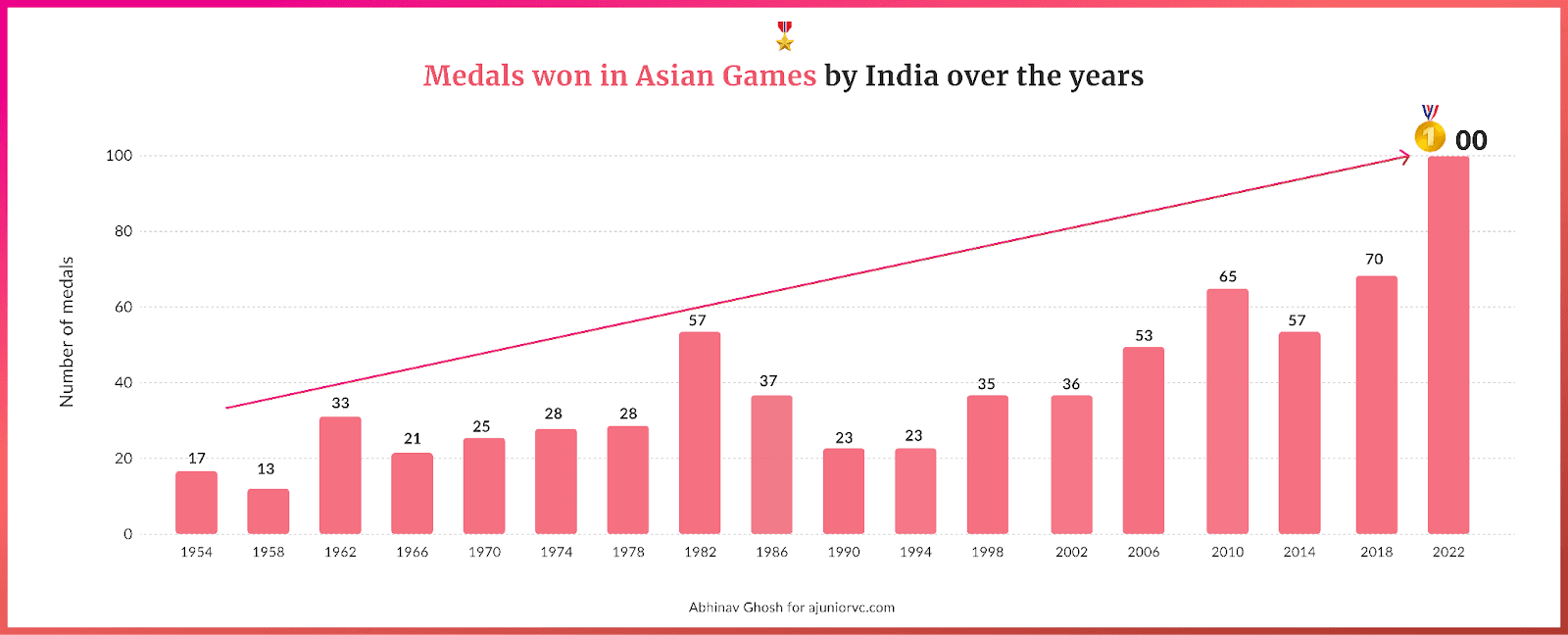
India has now firmly established itself as cricket’s big daddy, kabaddi’s champion, chess’ grandmaster, emerging power in badminton and athletics. Its performances at global stages are only signal.
The current decade marks a new era of sporting culture in the country, as evidenced by the government’s bid for to host the 2036 Olympics. Supporting this are government initiatives like Khelo India, aiming to address the historically underdeveloped sporting ethos at the grassroots.
This would be done through better scouting, talent and infrastructure development, and organizing structured competitions.
Meanwhile, the private sector is betting on India’s growing fondness for sports, beyond cricket.
Decades later, after being starved in the 1980s, money flows into sport. Successful commercialisation of non-cricketing sports would boost the sporting economy through multiple first-order and second-order effects.
On the cutting edge of these developments is the developing, albeit promising, sporting startup ecosystem in India. Given cricket’s staggering dominance in India’s sporting culture, several startups seek to disrupt the game with innovative offerings.
Anil Kumble-backed Spektacom, Shikhar Dhawan-endorsed StanceBeam, str8bat, and Smart Cricket are taking sports analytics to the next level by offering IoT sensors, which capture various data points during a batting shot to analyse its efficacy.
On the other hand, Z-Bat seeks to change the way cricket bats are bought – by using an algorithm-based approach to recommend customized cricket bats specifically tailored to different body types and playing styles.
Recognising a general scarcity of sports infrastructure, a long-standing pain point for young enthusiasts, the Playo application facilitates the online booking of sport venues, as well as connecting players.
As a nation just emerging from the shackles of colonialism, India defied the odds to not only possess the ambition to host the 1951 Asian Games but also the raw talent to win 51 medals across 57 events.
From dominating in sports introduced by colonial powers to successfully breathing new lives into hitherto fading desi sports, India’s sporting heritage is a story of winning against the odds.
Today, complementing India’s diverse sporting heritage is the world's largest millennial population, the world's largest population and one of the best connected digital ecosystems. The size would expand its sporting economy to a USD 100 billion market by the end of this decade.
India’s 50-year revolution in the 1980s is beginning to create a sporting superpower.
Writing: Parth, Raghav, Samarth, Shreyas, and Aviral Design: Abhinav and Chandra